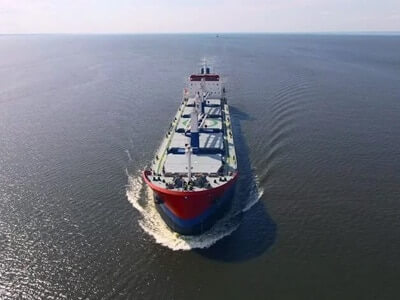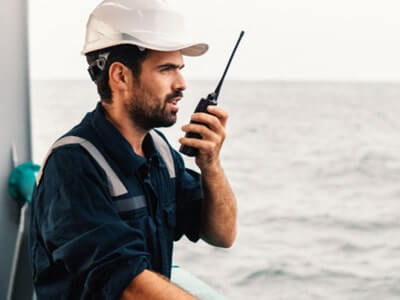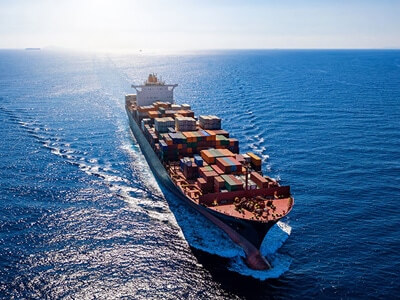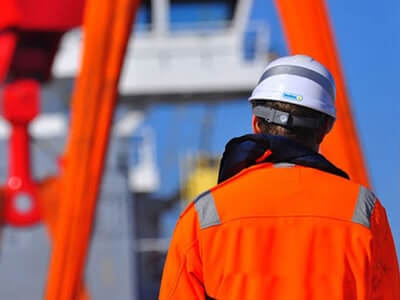FILES


Efficient Fuel Consumption
The highly reliable NAVIPILOT 4000 ensures continuous self-tuning adaptation for accurate steering and efficient fuel consumption, which is unique to all other autopilots in the marine industry.
Each single rudder activity increases fuel consumption and cost. For this purpose, the NAVIPILOT 4000 can adapt automatically to the current weather and sea conditions.
Track Control
Track Control (also referred to as “Tracksteering”) combines an ECDIS with the Autopilot. The navigator can program a voyage plan into the ECDIS that contains one or more tracks. Track Control with a NAVIPILOT 4000 marine autopilot is type-approved (category B/C) when connected to a Northrop Grumman Sperry Marine VisionMaster FT ECDIS.
The autopilot system receives its orders from the Northrop Grumman Sperry Marine ECDIS and transmits steering commands to the steering system. The orders may be manual changes of wanted heading, turn radius or rate of turn or it may be orders originating from track control along a selected route. Together with Northrop Grumman Sperry Marine Bridge ECDIS and Conning Information Display, the Integrated Bridge Autopilot forms a complete system for automatic track control.
Control Area Network (CAN)
Northrop Grumman Sperry Marine developed the first steering system using a Control Area Network (CAN). The CAN connects a various number of steering controllers, including the Autopilot Control and Display Unit into a network. With this, the installation is made far more simple and fast. Also, later extension of the system is very simple.
Override for Evasive Manoeuvres
Override is a means to immediately take control of the steering in the event that an evasive manoeuvre is necessary or a malfunction occurs at the autopilot. When activated, the control is transferred to the Override Non-Follow-Up Controller and the vessel is steered in manual control (non-follow up), until the Override mode is ended by the operator.
NAVIPILOT 4000 Marine Autopilot
Safety and Efficiency
Northrop Grumman Sperry Marine’s NAVIPILOT 4000 is a highly reliable ship automation system that ensures fuel savings, operational safety and efficient steering.
The innovative Autopilot is designed to learn your vessel’s steering characteristics, allowing for real-time, dynamic adjustments to make the ships steering more accurate and efficient. The continuous self-tuning adaptation is unique compared to all other autopilots in the industry.
Ship Automation Features
- Gyrocompass Heading interfaces: two RS422 x 2
- Magnetic compass interfaces: NMEA 0183, sine/cosine
- Nav/track interface with 10 possible directional and bidirectional setting variations
- Clearly arranged graphic LCD display with adjustable back lighting
- User-friendly operation with logical arrangement of sealed foil keyboard and ergonomic
- Analogue selection of set heading by means of the control disk and all other major parameters by means of soft keys
- Analogue output for thrusters control, rudder propellers and water jets
- System utilizes the NAVINET 4000 Steering Control Network
- Display and controls illuminated
- EC type approved by GL Luxembourg to 98/85/EC (Wheel Mark) Specified Standards: ISO/IEC 11674 EN 61162-1, IEC 61162-1, EN 60945, IEC 60945 IMO Resolutions A.342 (X), A.694 (17), A.813 (19), MSC.64 (67) Annex 3
- Control Display Unit
All main functions on the control display unit are operated via hard keys. The large graphical display ensures a clearly arranged presentation of information and the menu structure is clear and transparent. The NAVIPILOT 4000 operates intuitively according to Northrop Grumman Sperry Marine’s user-friendly philosophy.
The advanced technology, precise steering performance and optimized handling each provide additional safety aspects to efficient navigation. The NAVIPILOT 4000 features a large graphical display, which offers different day and night modes. Clearly arranged functions are operated via hard keys. You will feel familiar with the autopilot after just a few minutes, due to its intuitive operational design.
| Front panel Dimensions | 288 x 144 mm to DIN Standard |
| Installation Depth | 150 MM |
| Weight | 1.5 kg |
| Front Panel | Sealed Foil Keyboard, illuminated |
| Display | Graphic Liquid Crystal, illuminated |
| Max Ripple Content | 4 V pp, extreme values should not exceed 36 V or fall below 18 V |
| Power Consumption | 10 W max |
| Reverse Polarity Protection | Built-in |
| Rudder Angle Feedback Signal | ±10 V ±120° max rudder angle potentiometer resistance 2kW |
| Power Consumption | 10 W max |
| Fluxgate for Magnetic Compass | sine/cosine, C. Plath product |
| NAV/TRACK Interface | NMEA 0183 (sentence selectable) from GPS, INS and others |
| Speed Input | 200 p/nm or NMEA 0183 |
| 180° Turn Command | Port and starboard |
| Gyrocompass or Electronic Fluxgate | Two NMEA 0183 |
| Central Alarm | NMEA 0183 |
| Status Signals | AUTO, NFU, Helm, Remote, Ext System |
| Heading | NMEA 0183 |
| Heading Gyro | HEHDT at 10 Hz |
| Navigation System Data | NSD at 1 Hz |
| Heading Magnetic | HCHDT or HCHDM or HCHDG at 10 Hz |







